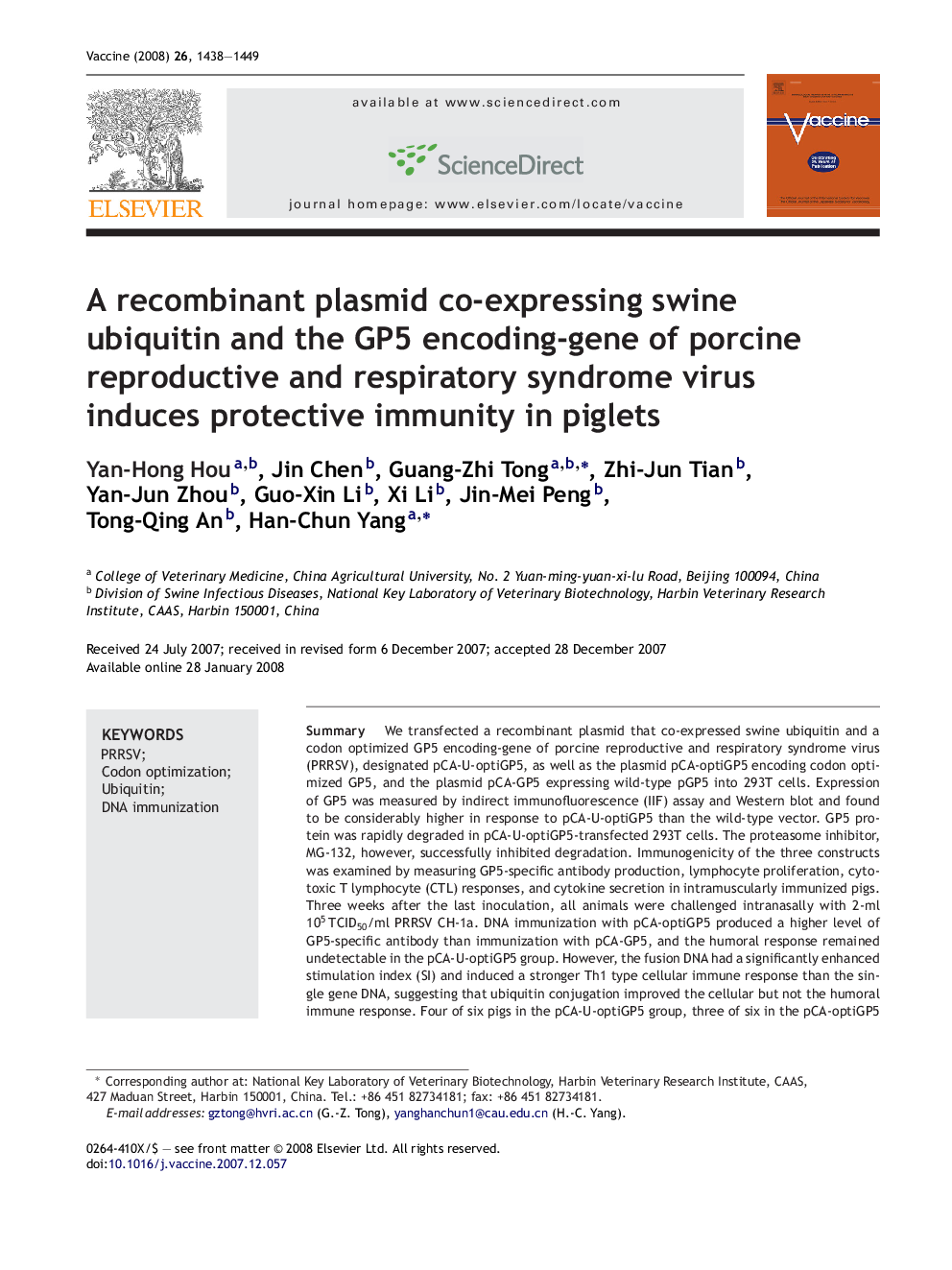| کد مقاله | کد نشریه | سال انتشار | مقاله انگلیسی | نسخه تمام متن |
|---|---|---|---|---|
| 2408362 | 1103168 | 2008 | 12 صفحه PDF | دانلود رایگان |

SummaryWe transfected a recombinant plasmid that co-expressed swine ubiquitin and a codon optimized GP5 encoding-gene of porcine reproductive and respiratory syndrome virus (PRRSV), designated pCA-U-optiGP5, as well as the plasmid pCA-optiGP5 encoding codon optimized GP5, and the plasmid pCA-GP5 expressing wild-type pGP5 into 293T cells. Expression of GP5 was measured by indirect immunofluorescence (IIF) assay and Western blot and found to be considerably higher in response to pCA-U-optiGP5 than the wild-type vector. GP5 protein was rapidly degraded in pCA-U-optiGP5-transfected 293T cells. The proteasome inhibitor, MG-132, however, successfully inhibited degradation. Immunogenicity of the three constructs was examined by measuring GP5-specific antibody production, lymphocyte proliferation, cytotoxic T lymphocyte (CTL) responses, and cytokine secretion in intramuscularly immunized pigs. Three weeks after the last inoculation, all animals were challenged intranasally with 2-ml 105 TCID50/ml PRRSV CH-1a. DNA immunization with pCA-optiGP5 produced a higher level of GP5-specific antibody than immunization with pCA-GP5, and the humoral response remained undetectable in the pCA-U-optiGP5 group. However, the fusion DNA had a significantly enhanced stimulation index (SI) and induced a stronger Th1 type cellular immune response than the single gene DNA, suggesting that ubiquitin conjugation improved the cellular but not the humoral immune response. Four of six pigs in the pCA-U-optiGP5 group, three of six in the pCA-optiGP5 group, and two of six in the pCA-GP5 group were devoid of visible pathological changes that were present in other vaccinated and control animals after challenge. Viral replication and distribution in the blood and tissues was lower in the pCA-U-optiGP5 vaccinated group than the other groups, suggesting that codon optimization, along with the development of rapidly processed antigen, represents a novel strategy to increase the immune efficacy of DNA vaccines against PRRSV.
Journal: Vaccine - Volume 26, Issue 11, 10 March 2008, Pages 1438–1449